ZC Capital Research Report: On the BTC L2 Public Chain TuringBitChain Built on the UTXO Underlying Model
Author: Jane, ZC Capital
Project Introduction
TuringBitChain (hereinafter referred to as TBC) is a public chain based on the UTXO model of the original Bitcoin protocol. Starting from the TXID generation method at the lowest level, it further improves parallel performance and innovatively proposes a Layer-1 smart contract solution implemented on the UTXO model, achieving unlimited scalability while ensuring sufficient decentralization.
What is the UTXO model? Simply put, the UTXO model is a special account-based bookkeeping model. Its Chinese meaning is "Unspent Transaction Output," and it differs significantly from the account balance models of ETH and traditional banks in that this model only records the transactions themselves, not the results of the transactions.
The UTXO model has the following two advantages compared to account balance models like ETH:
If a user enables a new address for transfers and transactions, the relationship between the new address and the original address is difficult to trace, which better protects user privacy;
The UTXO model can theoretically utilize different UTXOs to issue multiple transactions in parallel and broadcast them to the network.
The original intention of Bitcoin's design was to achieve complete transparency, fairness, and auditability. UTXO can help Bitcoin achieve these goals. Therefore, BTC adopts the UTXO model as its underlying storage data structure, and BTC can also solve the double-spending problem without relying on trusted third parties.
Project Analysis
The biggest challenge faced by blockchain technology has always been scalability. Different public chains have been trying to solve this problem with various technical routes, such as Ethereum's sharding solution; due to the high concurrency characteristics of the UTXO model, many public chains choose the UTXO route for scalability. However, most UTXO model public chains currently do not have Layer-1 smart contracts and cannot implement complex business logic.
We researched several other public chains, such as: Conflux, which uses the UTXO model and implements EVM-compatible smart contracts through ESpace rather than BVM. Nervos has created a layer similar to rollup to implement smart contracts. ADA has modified the UTXO model into the EUTXO model to implement smart contracts, but the EUTXO model is not compatible with BTC.
STX has smart contracts, POX consensus, and is a non-UTXO model, with a currently developing ecosystem. Kas supports EVM but currently does not have smart contracts (the project roadmap states that it will support them in the future).
TBC, on the other hand, connects Bitcoin with a multi-chain architecture to create a complete TCP/IP protocol. Currently, it supports NFT, DeFi, data storage, BTCFI, and BTC NFTs and BRC20 implemented through conventional protocols. Support for Ordinal & BRC20 functions will also be realized in the second quarter.
The goal of the TBC public chain is to help unleash the full potential of Bitcoin and solve its congestion issues; in the future, BTC will no longer just be digital gold, merely a tool for value storage, but may also be used for daily transactions, including small purchases like buying coffee; and will have a smart contract operating system similar to ETH. TBC hopes to become the true Web3 public chain and RWA infrastructure that can support a massive number of users in the future, helping the BTC ecosystem build a prosperous BVM ecosystem similar to EVM.
Project Features
1. Decentralization: Adopts the same POW consensus scheme and SHA256 mining algorithm as BTC, ensuring that TBC is open. The release of TBC blocks is determined by computational power through fair competition, fully utilizing the market's optimization allocation capabilities.
2. Compliance and Efficiency: TBC adopts a compliant node mining mechanism for block generation, which can efficiently prevent computational power attacks and asset theft risks when network computing power is low.
3. Unlimited Scalability: Utilizes an optimized UTXO high concurrency model and upgrades the traditional UTXO model's transaction format, creating high-performance parallel computing super nodes, ensuring it can support millions of TPS as a dynamically scalable public chain; (during testing on the TBC testnet, TPS reached over 13,000).
4. Layer-1 UTXO Smart Contracts: Innovatively created a pure Layer-1 practical Turing-complete smart contract solution based on the UTXO model, TuringContract, which can implement all EVM logic. Thanks to the advantages of the UTXO model, TBC has high performance and extremely low transaction fees.
5. Zero Confirmation Transaction Technology: FT & NFT transactions are completed instantly (low-latency on-chain application user experience), and GAS fees decrease as the number of users increases;
6. Bitcoin Operating System (feasible smart contracts): Data storage, contract execution, and transaction transmission are all completed on a single chain;
7. Wallet addresses identical to Bitcoin wallet addresses: TBC applies the same quantity and technical structure to BTC, and will enable a 1:1 mapping function for Bitcoin in the future; it can realize BTCfi narratives (enabling the use of BTC as an asset and as a transaction unit).
8. Friendly Cross-Chain Modular Infrastructure (tentatively called TuringBridge): A) An open-source application library is about to be launched. B) Enables highly customizable, out-of-the-box functional applications.
Detailed Explanation of TBC Core Technology
TBC is a high-performance and locally smart-complete blockchain infrastructure.
A. High Performance
A1. Unlimited Scalability
A2. Pipeline Processing
B. Smart Completeness
Each local UTXO chain is a complete Turing machine.
A1. High Performance: Unlimited Scalability
High performance means high parallel scalability, utilizing distributed computing rather than single-machine single-core computing, which includes two types of scalability: strong scalability and weak scalability.
The former fixes the problem size and increases the usage of computing cores, reducing the total computation time accordingly, expressed as:
Time(N) = Time(1) / N
Where N is the number of CPU processing cores.
The latter expands the problem size while correspondingly increasing the computing cores, allowing the computation time to maintain a stable level, expressed as:
Workload(1)/1 ~? Workload(N)/N
By studying various parallel algorithms, the distributed computing model adopted by TBC can simultaneously possess both strong scalability and weak scalability characteristics.
A2. High Performance: Pipeline Processing
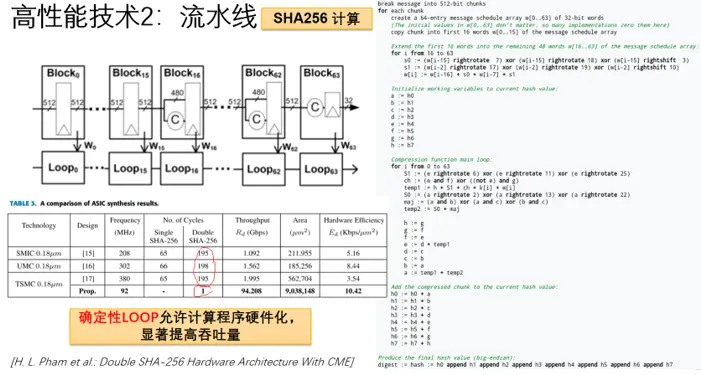
TBC adheres to the basic concept of pipelining in the design process of smart contracts, allowing for future hardware acceleration of serial program execution throughput.
B. Smart Completeness
1. Under TBC's UTXO model, each UTXO chain is a Turing machine, and a large number of concurrent Turing machines form a practical smart-complete network for blockchain, with significant differences between its underlying BVM and EVM.
BVM and EVM Performance Comparison:
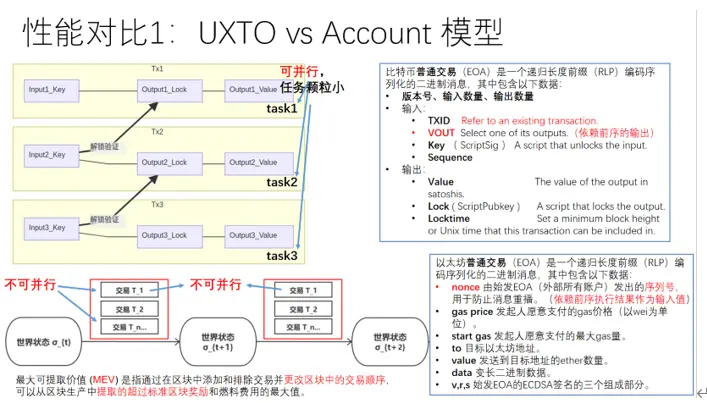
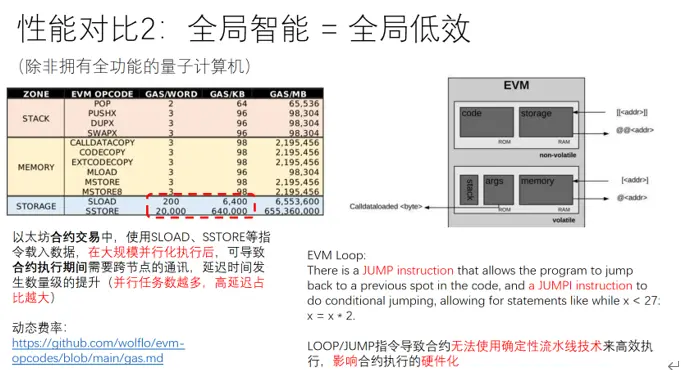
2. BVM Stack Processor
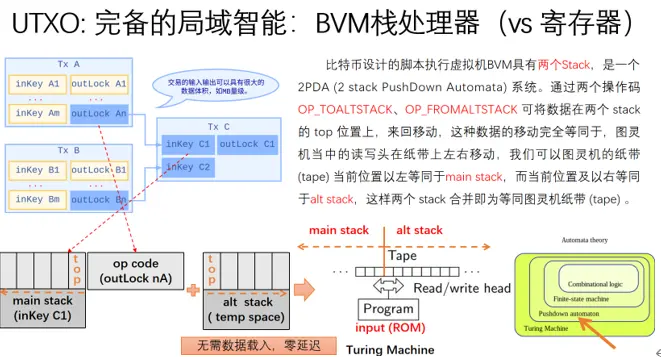
3. Introduction to OPPUSHTX Technology
TBC can currently choose the OPPUSHTX technology to incorporate upstream and downstream transaction data into programmable data space, achieving local Turing completeness, while isolated UTXOs allow different programmable spaces to execute in parallel, enabling efficient block data verification and reducing the fees for each transaction.
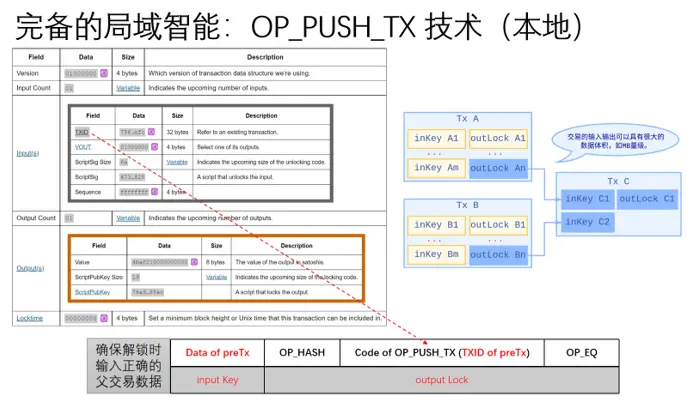
4. Data Inflation -> Layered Hashing
TBC addresses the issue of data bloat and inflation during transmission between nodes or within smart contracts through an original flat layered hashing model, providing a solid foundation for the upper structure. 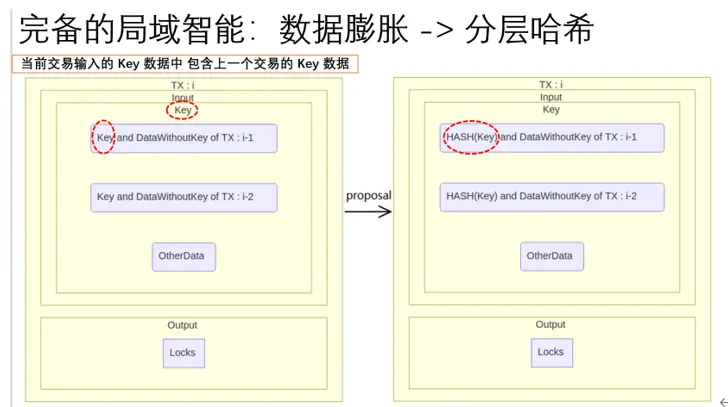
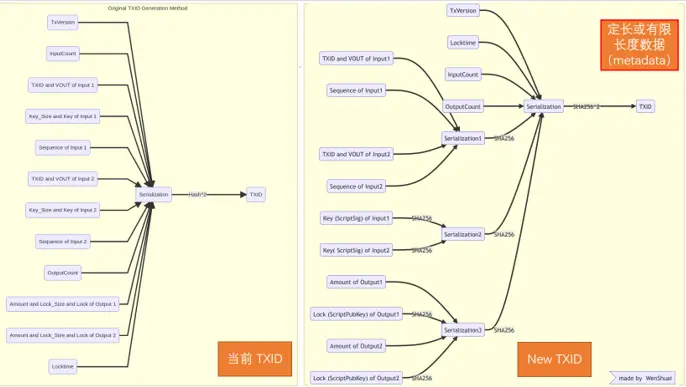
Economic Model Analysis
1. TBC is completely fairly launched: TBC is based on the original Bitcoin protocol's pure POW model; there is no ICO, no IDO, and node operation and execution are funded by initial contributors.
2. The TOKEN of the TBC public chain is called TBC token; TBC has a maximum supply cap of 2.1 billion, of which 93.3% naturally existed and has been locked since the fork (it may take at least 4 years to start unlocking). The remaining 6.7% is generated through mining. Like BTC, TBC's mining output halves every 4 years. It is expected that after 4 years, the total circulation of TBC will be approximately 65 million.
3. TBC block interval: Approximately every 10 minutes; difficulty adjustment algorithm: FastDAA; mining algorithm: SHA-256 (compatible with BTC\BCH); block size: initial cap of 4G (subsequently dynamically scalable based on conditions).
Development Team
**TBC's early developers come from multiple core technology geek teams worldwide, with years of research experience in large blocks and scalability solutions. TBC has academic achievements from experts in high-performance computing. In September 2021, the underlying technology of TBC was invented and announced, and the Turing-complete high-performance Layer-1 smart contract Turing-Contract was designed and tested early on. *In March 2022, the Turing-complete high-performance Layer-1 smart contract Turing-Contract was officially released.*
In December 2023, the TBC Alpha testnet went live. The scalability solutions from world-renowned high-performance computing centers were validated. The execution speed of TuringContract exceeded 13k TPS. After several months of testing on the testnet, the TBC mainnet officially launched on February 14, 2024.
Project Roadmap
1. First Phase: (BTCfi Phase)
TBC aims to release Bitcoin's potential to participate in DeFi, NFT, RWA, and other ecological applications through BVM [Bitcoin Virtual Machine].
2. Second Phase: (Promoting BVM Compatibility with All UTXO Chains)
a: In the future, promote more UTXO chains to adopt BVM, such as the Doge ecosystem.
b: Assist UTXO BVM chains in integrating with account model EVM chain ecosystems through mature decentralized cross-chain infrastructure -- TuringBridge.
3. Third Phase: (Block size enters TB phase, transaction fees approach 0)
TBC breaks the convention of high fees caused by a large number of users in existing blockchains. As the network develops, TBC will showcase the charm of decreasing transaction fees as the number of users increases. Supporting the explosive growth of the BTC ecosystem.
4. Fourth Phase: (Building the best underlying public chain for the future WEB3 world)
As TBC can run massive blockchain applications and verify data on-chain, the network effect continues to strengthen, TBC will assist BTC in leading the next generation of the internet and will become one of the most user-friendly WEB3 infrastructures.
In summary: TBC is The blockchain for second life. Its vision is to build the most user-friendly underlying public chain for the WEB3 world. TBC is also the initiator of the most important BVM virtual machine in the Bitcoin ecosystem, akin to Polygon in the BTC ecosystem. The mainnet is already online, and with the explosion of the BTC ecosystem, will TBC have the opportunity to become the leader of BTC L2? Let's wait and see!









